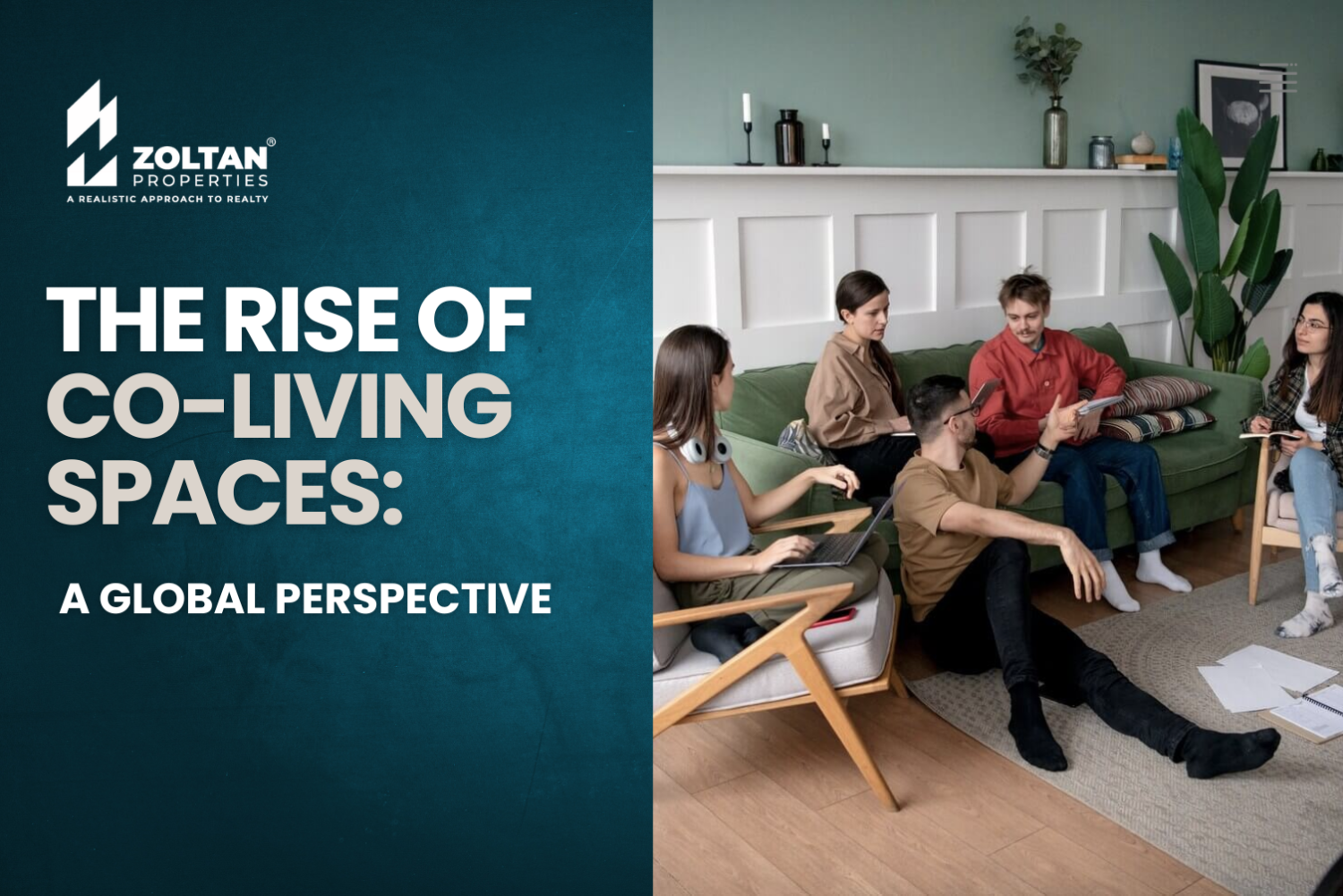Have you ever heard of co-living spaces? They are communal living spaces where individuals share living areas, kitchens, and sometimes even workspaces. And while the concept of co-living may not be new, it's certainly gaining popularity worldwide. In fact, the global co-living market is expected to grow by a whopping 116% between 2019 and 2025, according to a report by Zion Market Research. So, why is co-living becoming such a big deal? For starters, it's an affordable housing option for young professionals and digital nomads who want to live in a city without breaking the bank. But co-living is more than just a cheap place to stay. It's a lifestyle that fosters community, collaboration, and a sense of belonging. In this article, we'll explore the rise of co-living spaces from a global perspective and discover why this trend is here to stay.
What is co-living?
Co-living is a modern housing concept where individuals share living spaces, kitchens, and sometimes workspaces. It's more than just roommates living together; it's a community of like-minded individuals who share common values and interests. Co-living spaces come in different shapes and sizes, from apartments to large houses, and offer a range of amenities such as cleaning services, social events, and shared workspaces. Co-living is about fostering a sense of community, collaboration, and a shared experience.
The history of co-living
The concept of co-living can be traced back to the 1960s, when communal living was popularized by the hippie movement. However, the modern co-living trend emerged in the early 2010s as a response to rising living costs in urban areas. The first co-living spaces were established in tech hubs such as San Francisco and New York City, catering to young professionals and startup entrepreneurs. Co-living has since grown in popularity, spreading to other cities and attracting a wider demographic.
The benefits of co-living
Co-living offers several benefits that make it an attractive housing option for many individuals. For one, it's an affordable way to live in the city, with rents typically lower than traditional apartments. Co-living also fosters a sense of community and collaboration, providing opportunities to meet new people and make new connections. Additionally, co-living spaces often come with various amenities and services, such as cleaning and maintenance, social events, and shared workspaces. These perks make co-living an attractive option for young professionals, digital nomads, and those who value social interaction and a sense of community.
Co-living statistics
The co-living market is growing rapidly, with the global market expected to reach $8.9 billion by 2025, according to a report by Zion Market Research. The report also predicts that the market will grow at a compound annual growth rate of 16.3% between 2019 and 2025. The Asia-Pacific region is expected to be the fastest-growing market for co-living, with a projected CAGR of 17.9% during the forecast period.
The rise of co-living spaces globally
Co-living is a growing trend worldwide, with new co-living spaces popping up in cities around the globe. The demand for co-living is driven by several factors, including rising living costs, changing lifestyles, and a desire for community and collaboration. Let's take a closer look at how co-living is taking shape in different regions.
Co-living spaces in North America
North America was one of the first regions to embrace co-living, with the first co-living spaces established in San Francisco and New York City in the early 2010s. Today, co-living is a popular housing option for young professionals and digital nomads in cities across the continent. Co-living spaces in North America range from small apartments to large houses and offer a range of amenities such as cleaning and maintenance, social events, and shared workspaces.
Co-living spaces in Europe
Europe has also seen a surge in co-living spaces in recent years, with cities such as London, Berlin, and Amsterdam leading the way. Co-living in Europe has a slightly different focus than in North America, with a greater emphasis on community and a sense of belonging. Co-living spaces in Europe often offer shared meals and other social events to foster a sense of community.
Co-living spaces in Asia
Asia is the fastest-growing market for co-living, with a projected CAGR of 17.9% between 2019 and 2025, according to Zion Market Research. Co-living is particularly popular in tech hubs such as Bangalore, Singapore, and Tokyo, where young professionals and startup entrepreneurs are seeking affordable and flexible housing options. Co-living spaces in Asia often offer a range of amenities such as cleaning and maintenance, shared workspaces, and social events.
Co-living spaces in Australia and New Zealand
Co-living is also gaining popularity in Australia and New Zealand, with co-living spaces popping up in major cities such as Sydney, Melbourne, and Auckland. Co-living in these regions often caters to young professionals and students, providing an affordable and flexible housing option. Co-living spaces in Australia and New Zealand often offer a range of amenities such as cleaning and maintenance, social events, and shared workspaces.
Co-living spaces in South America and Africa
Co-living is still a relatively new concept in South America and Africa, but it's starting to gain traction in major cities such as Sao Paulo, Buenos Aires, and Cape Town. Co-living in these regions often caters to young professionals and digital nomads, providing an alternative to traditional apartments. Co-living spaces in South America and Africa often offer a range of amenities such as cleaning and maintenance, social events, and shared workspaces.
The future of co-living
The future of co-living looks bright, with the market expected to grow rapidly in the coming years. As more people seek affordable and flexible housing options, co-living is poised to become a mainstream housing alternative. Co-living spaces will continue to evolve, offering new amenities and services to meet the needs of their residents. As the world becomes increasingly interconnected, co-living will play an important role in fostering community and collaboration.
Conclusion
Co-living is a growing trend worldwide, offering an affordable and flexible housing option for young professionals and digital nomads. It's more than just a cheap place to stay; it's a lifestyle that fosters community, collaboration, and a sense of belonging. Co-living is here to stay, and as the market continues to grow, we can expect to see new and innovative co-living spaces popping up in cities around the world.

 IN
IN
 France
France
 Germany
Germany
 Greece
Greece
 India
India
 Saudi Arabia
Saudi Arabia
 Spain
Spain
 United Arab Emirates
United Arab Emirates
 United Kingdom
United Kingdom
 United States
United States






